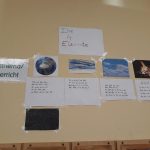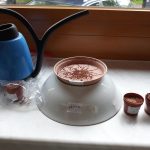The four elements in the vegetable bed

The students of the polar bears get rid of the elements with puzzles.
We are experimenting with cress: Which of the 4 elements are elementary in growth? The students fill clay pots with earth and cress seeds. Every pot lacks an important element. In a pot no water is added, in one earth missing, in the other light, in an air and in the last heat. In another pot, all elements are present, water, earth, air, light and heat. In a trial protocol, the students record the results of the experiment. They use the results to check their assumptions expressed before the experiment.
The students determine their vegetables- seedlings brought by their knowledge and a determination book. They also determine the ideal location (sunny / partially shaded, shady). Then they plant their patch in the school garden with the seedlings and sow other vegetables such as carrots and radishes. The patch was previously cleaned and prepared with humus from the compost heap.
The students make patch signs for the planted vegetables!
The students create profiles of the grown vegetables and make posters, the students find out which is the edible part of the vegetable plant and where it grows (above the ground or in the ground). In another lesson students introduce their own poster to other students.
The carrot! The students take a closer look at the carrot and explore what it consists of and where and how it grows. The elements water, air, heat, light and earth are also essential here. The carrot consists mainly of water, you can not see it. The students build flutes out of carrots.

















